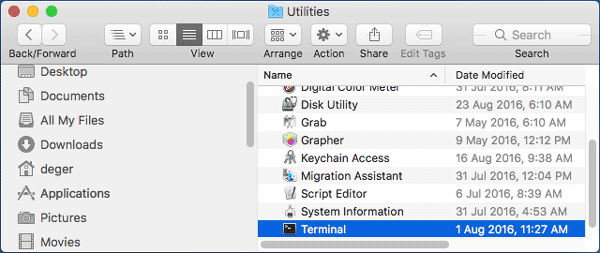

To make sure that your hidden folder is in place, use the change directory command to enter the folder and the present working directory command to verify that it works. You’ll receive no confirmation if everything went well. We’ll call our folder “topsecret” so we’ll type the following command: mkdir. Next we’ll create our hidden folder using the make directory command, “mkdir.” Type “mkdir,” a space, a period, and then the name of your hidden folder. To get to the desktop, we’ll type “cd Desktop.” Using the present working directory command, “pwd,” we can verify that we are now at the desktop. Terminal by default starts off in the top-level user folder. In our example, we want to create a hidden folder on the Desktop. This can be accomplished by using the change directory, or “cd,” command. Open Terminal from Applications > Utilities and navigate to the directory in which you’d like to create your hidden folder. Once again, Terminal comes to the rescue. In OS X, hidden files begin with a period character, but the operating system won’t let you create them with Finder.
#OPEN TERMINAL IN DIRECTORY MAC HOW TO#
We’ll show you how to create a hidden folder in which to store your private files. In the Finder, open the /Applications/Utilities folder, then double-click Terminal. While not secure against an experienced set of prying eyes, using hidden files and folders is a quick and easy way to keep sensitive items out of view on your Mac. On your Mac, do one of the following: Click the Launchpad icon in the Dock, type Terminal in the search field, then click Terminal. We’ve discussed accessing hidden files and folders in Mac OS X before, but many users don’t know that they can also create their own hidden items. How to Create & Use Hidden Folders in Mac OS X


 0 kommentar(er)
0 kommentar(er)
